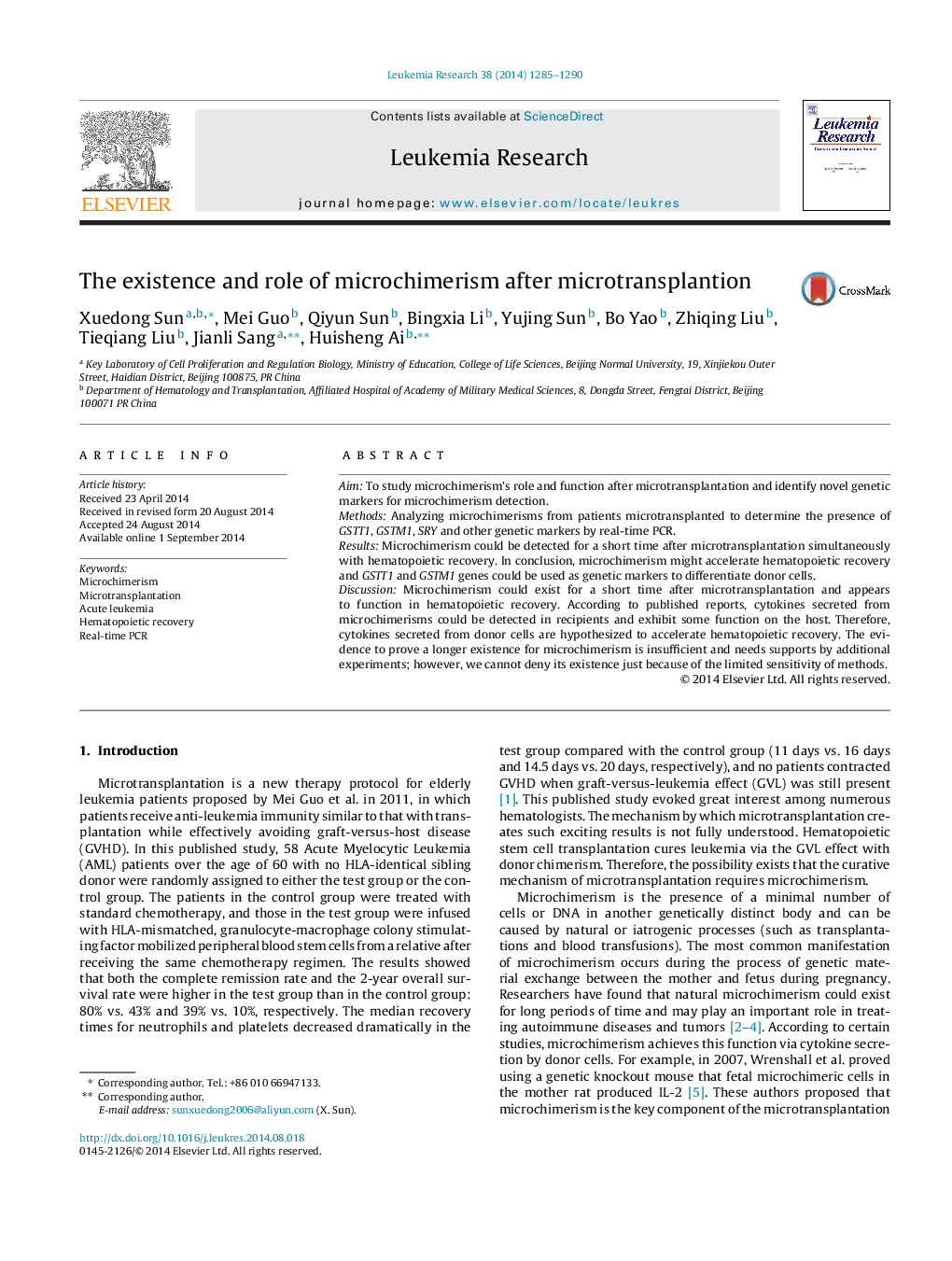| Article ID | Journal | Published Year | Pages | File Type |
|---|---|---|---|---|
| 2136656 | Leukemia Research | 2014 | 6 Pages |
•Microchimerism can be detected after microtransplation by new genetic markers.•Microchimerism can exist for 14 days at least after the microtransplantation.•We speculate that microchimerism may accelerate the hematopoietic recovery.
AimTo study microchimerism's role and function after microtransplantation and identify novel genetic markers for microchimerism detection.MethodsAnalyzing microchimerisms from patients microtransplanted to determine the presence of GSTT1, GSTM1, SRY and other genetic markers by real-time PCR.ResultsMicrochimerism could be detected for a short time after microtransplantation simultaneously with hematopoietic recovery. In conclusion, microchimerism might accelerate hematopoietic recovery and GSTT1 and GSTM1 genes could be used as genetic markers to differentiate donor cells.DiscussionMicrochimerism could exist for a short time after microtransplantation and appears to function in hematopoietic recovery. According to published reports, cytokines secreted from microchimerisms could be detected in recipients and exhibit some function on the host. Therefore, cytokines secreted from donor cells are hypothesized to accelerate hematopoietic recovery. The evidence to prove a longer existence for microchimerism is insufficient and needs supports by additional experiments; however, we cannot deny its existence just because of the limited sensitivity of methods.
